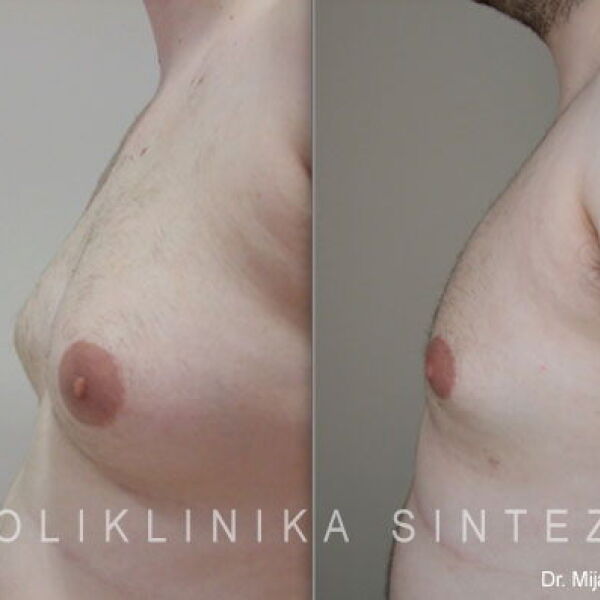Male breast reduction
About
Male breast reduction, also known as gynecomastia, is a surgical procedure used to reduce the size of male breasts to achieve a more balanced and masculine chest appearance. This procedure may involve the removal of excess fat tissue, glands, or skin from the breast area to achieve the desired aesthetic outcome. Gynecomastia can be treated surgically or with the minimally invasive VaserLipo method, depending on the patient's needs.
Candidate
Candidates for male breast reduction typically include men who have enlarged breasts due to excess fat tissue, hormonal changes, medication side effects, or genetic factors. This procedure can be beneficial for men seeking a more masculine chest appearance.
Preparation
Before male breast reduction, patients will consult with a surgeon to understand the goals of the procedure and potential outcomes. Preoperative preparation may involve medical examinations and evaluations to ensure safety during the surgery.
Treatment
During male breast reduction, the surgeon will carefully remove excess fat tissue, glands, or skin through precise incisions or with the VaserLipo method. The goal is to achieve a balanced and masculine chest appearance that complements the patient's body.
Result
The results of male breast reduction typically include a reduction in breast size, achieving symmetry and a balanced chest appearance, and improving the self-confidence of patients. This procedure can provide men with greater satisfaction with their body's appearance.
Precautions
After male breast reduction, it is important to follow the surgeon's instructions to reduce the risk of complications and achieve successful recovery. Regular visits to the surgeon for progress monitoring and proper wound care are also important for achieving optimal results.
ZagrebMed patient reviews
F.A.Q.
Gynecomastia is a medical condition that refers to the enlargement of breast tissue in males. It can result in swelling, tenderness, or an increase in the size of the breasts.
Gynecomastia can be caused by hormonal changes, such as an imbalance of estrogen and testosterone, the use of certain medications, obesity, genetic factors, or certain health conditions.
The diagnosis of gynecomastia usually involves a physical examination and medical history review. A doctor may recommend additional tests, such as blood tests or imaging studies, to rule out other possible causes and assess the extent of gynecomastia.
Most cases of gynecomastia are not harmful to health and may be only a cosmetic concern. However, in some cases, gynecomastia can be a symptom of a more serious underlying health condition that requires further evaluation and treatment.
The treatment of gynecomastia can involve lifestyle changes, medication monitoring, hormone therapy, or surgical intervention. Depending on the cause and severity of gynecomastia, a doctor will recommend the most appropriate treatment for each individual patient.
The recovery period after gynecomastia surgery typically lasts a few weeks. Patients may experience swelling, bruising, and discomfort in the treated area. It is important to follow the surgeon's postoperative care instructions and avoid strenuous activities until fully recovered.
In most cases, after gynecomastia surgery, the results are permanent. However, there is a small possibility of gynecomastia recurrence if underlying causes (such as hormonal imbalances) persist. It is important to maintain a healthy lifestyle to reduce the risk of recurrence.
Gynecomastia surgery aims to reduce the size and reshape the breasts in males to achieve balance and symmetry in the chest area. The surgeon will customize the procedure to individual patient needs to achieve the desired aesthetic outcome.
In some cases, exercise and weight loss can help reduce the appearance of gynecomastia, especially if the underlying cause is increased fat in the chest area. However, if gynecomastia is caused by increased breast tissue, a surgical procedure such as liposuction or mastectomy may be necessary to achieve desired results.
Gynecomastia is relatively common in adolescents. In most cases, gynecomastia in adolescents resolves on its own within a few months or years. It is caused by hormonal changes during puberty and usually normalizes without the need for treatment. However, in some cases, gynecomastia may persist longer or cause emotional discomfort, so it is advised to consult with a doctor to determine the best treatment option.
Before & After
Photos


Send an inquiry for the treatment
Start your way towards a successful treatment today. Fill out the form with your data, choose the service you need and we will connect you with the top medical experts in Zagreb.